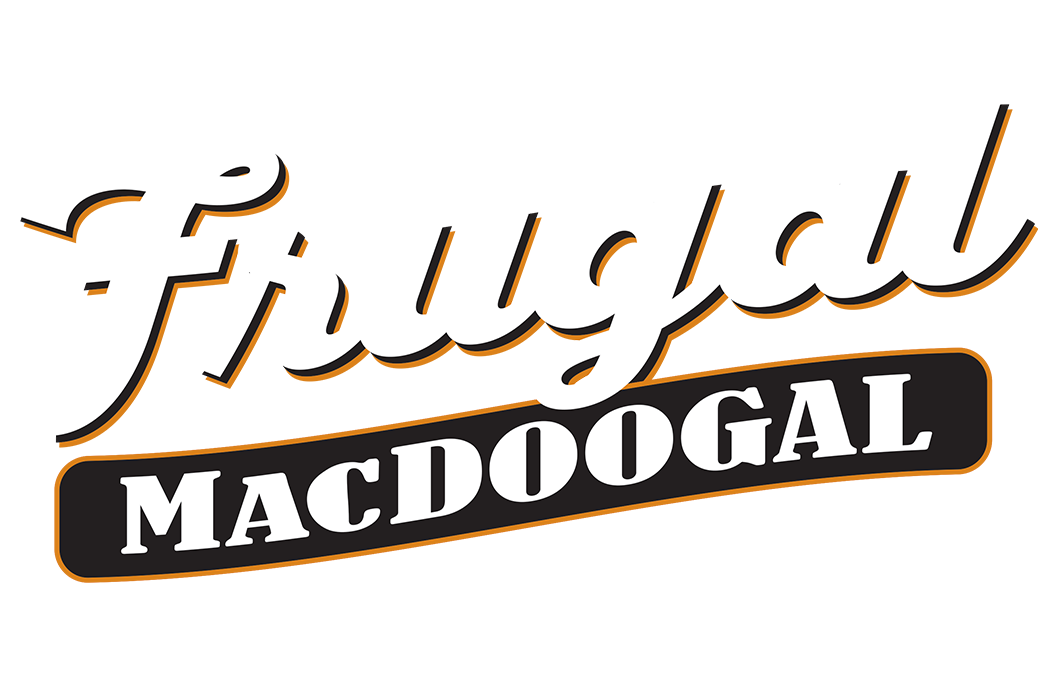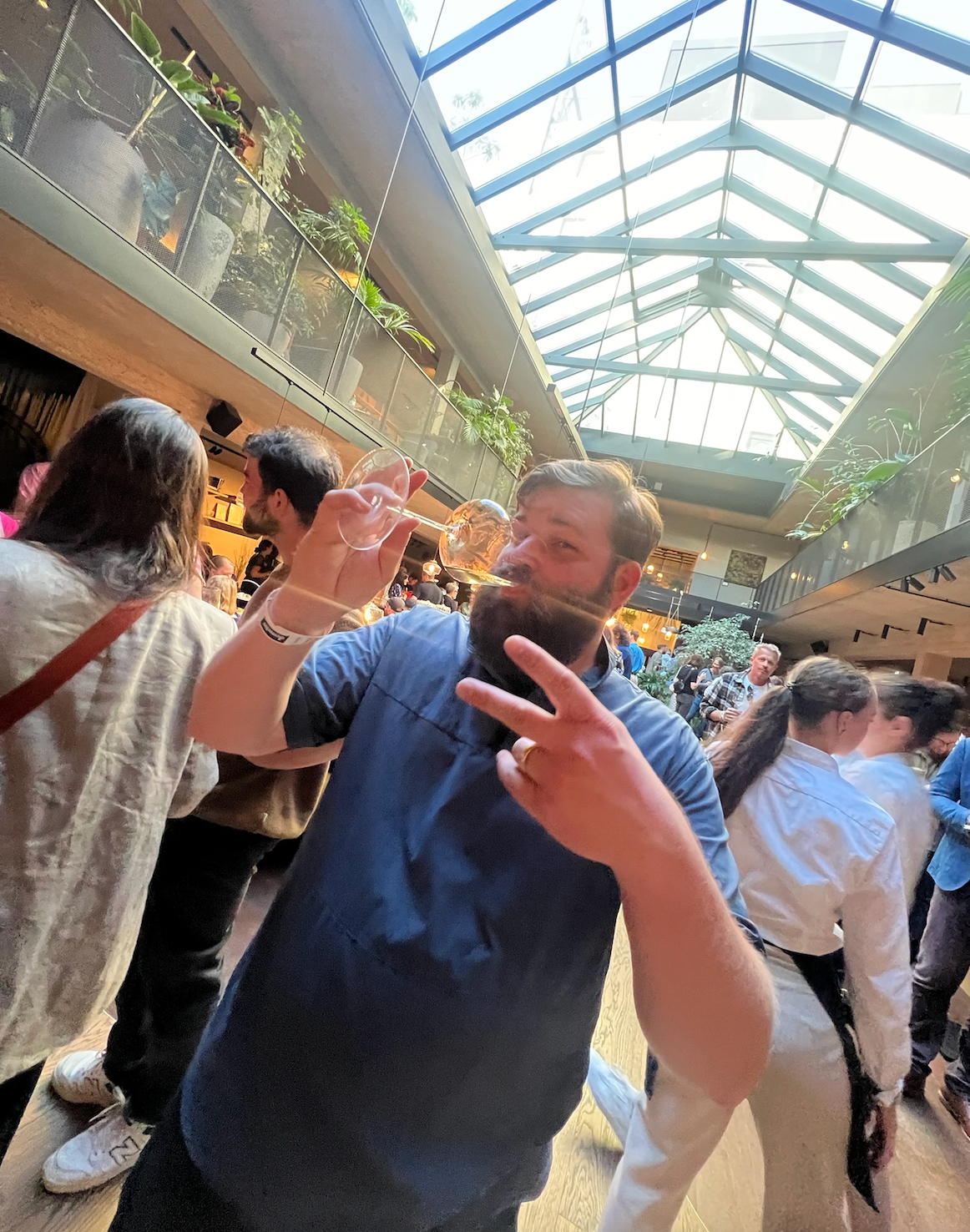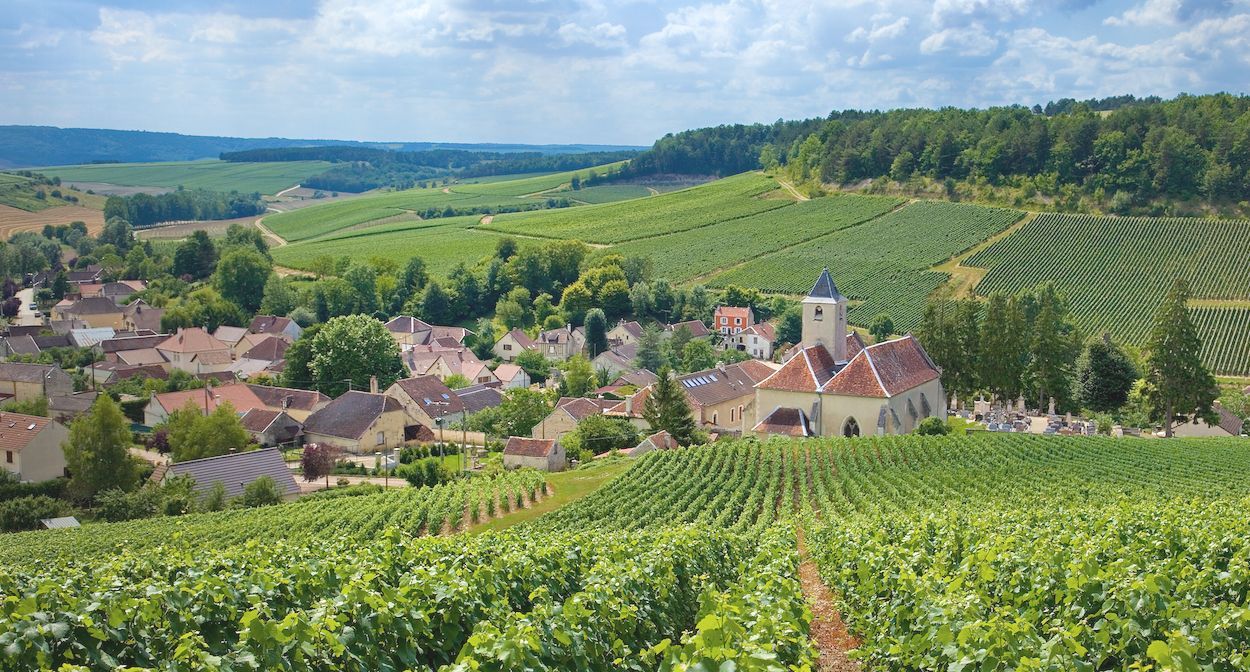Two weeks in Spain, one year to ship, finally the payoff!
We hope you'll enjoy this blog post, taken from the monthly Preston's Picks Wine Club content that accompanies each group of wines received by Club Members.

We spent just shy of two weeks traveling around the country in search of the best wines we could find for the lowest prices. We met some incredible winemakers, saw some of the most beautiful places I’ve ever seen, and tasted some amazing wines. After the trip, I ordered wines from a dozen of the wineries we visited, had them consolidated on a container by an import company, and shipped to the U.S. through a New Jersey port, loaded on a truck and brought to my clearinghouse here in Nashville, Ajax Turner, who then brought them to the store. This took nearly a year and was a wildly frustrating process, but one that was well worth it. I purchased a dozen wines on the trip.
A passion for learning is why I do what I do. The discovery of new things and the taking in of new information, especially new information about things I love: nature, food, farming, history, art, and wine, and then getting to share that information with you is what I love most about this incredible job.
Last year I made a trip to Spain to build a relationship with an importer, visit wineries, make connections with winemakers, and most importantly buy great wine for the store. Sorry to say it, but Spain was never a place I would have put at the top of my “to-see” list. I’ll blame my own ignorance for that. There were plenty of other places I would have gone to before, but I am happy to report, after an incredible trip there, that I was wrong for letting it fall to secondary lists! Hopefully, this report and the stories in it will make you bump Spain closer to the top of your “to-see” list if it’s not already!
Even though I was sent to build business relationships and seek out great wine to sell, I think the greatest takeaway was all that I learned about the people, geography, history, culture, and wine of Spain. Being surrounded by something I love so much but in a place I knew so little about put me in the perfect situation to rediscover why I fell in love with wine in the first place- that passion for learning.
We started in Vigo, the breezy Atlantic coastal town in Rias Baixas, home of the seafood platter where rivers flow with albariño. Day one began at a long table with the rest of our group. We feasted on every seafood dish on the menu at a restaurant in the famous Old Fisherman’s Quarter, drank a dozen bottles of albariño, and got to know each other a bit. The crayfish, spider crabs, oysters, barnacles, shrimp, and octopus (which we’d soon find are served at every meal in every town) never stopped coming to the table, along with a handful of other sea critters I didn’t recognize. We spent the evening on the beach watching the sun go down with glasses of albariño, of course, before heading to dinner at a Michelin-starred restaurant where we crushed more seafood and tasted through another eight or so albariño producers. I assumed the incredible events of the day were just a way for our hosts to get the trip off to a great start, with a royal welcome. I didn’t think every day would be like that first one, but buddy was I wrong.
Javi and Phillipe were our hosts. They’re two Spanish men who have worked together for nearly two decades in the wine business and now finally run a Spanish supplier company together. They set up small wineries with importers, distributors, and private purchasing groups like us. These two men were pretty opposite people - Javi was a little shy, serious, kind, nervous energy about him - Phillipe was outgoing, loud, life of the party, enormous both in size and personality. Both, filling different roles, were incredible hosts on the trip from start to finish. They blew it out of the water and really seemed to love our presence. They went above and beyond in curating our visits and experiences. They were obviously trying to woo us as customers but they also genuinely seemed excited and proud to show us their country in the best way possible. I wish I could write a detailed description of each region and winery we visited but that would leave you reading a book and not a blog, and thus, I apologize for my brevity but still hope you ‘get the picture’ in a way that makes you feel like you were there, at least a bit.
Our first day in the field we hit three wineries, my favorite being Bodegas As Laxas where we ate lunch on a stone altar surrounded by cork trees on top of a hill behind the property. Here we stood under the pergola perched vines, a method traditional to the region which allows sea breezes to keep grape clusters free of mold and gives farmers free space for livestock and vegetables.
You can see how tall these vines are here. That’s my cute wife chillin' underneath. I also included a drawing of me next to different training systems for a comparison of size.
We drank our final bottles of albariño here and also learned how little albariño Spaniards drink (The Spanish people’s favorite white wine is verdejo. Americans can thank Gallo and Martin Codax for our obsession with albariño from Spain). From
Rias Biaxas we traveled east to
Ribeiro where we saw Costeira’s brand new shiny winery and tasted amazing wines from treixadura, a variety that I wasn’t too familiar outside of Vinho Verde, but came to love. From there they took us to their tasting room and “old winery”. This place was incredible. It rested inside the renovated ruins of an ancient Roman outpost nestled in the mountains. Definitely one of the coolest locations we visited. We had an amazing meal and tasted bottlings for import but also some special bottlings from their family reserve and wine club only. The winemaker was an amazing personality. He started by sabering a bottle of sparkling wine and giving us a tour of their most prized vineyard. One of my favorite wines from the trip was here. The Pazo de Toubes comes out of a few larger puncheons the winery keeps in the stone room next to the tasting room we had lunch in. These barrels were stars. The room was empty other than these four barrels spread out with single lights hanging above each, shining a spotlight on the wooden vessel. They don’t make enough for export and barely enough to fulfill wine club orders, so I couldn’t get any for the store but this wine was incredibly unique. Made with only native white Galician varieties all grown on their estate and oxidized in just the right way, the wine was complex while being fresh, a difficult balance. It was delicious.
From there we continued northeast to
Bierzo
where we spent a day with the winemaker at Bodegas Godelia. Our next stop was
Toro, a small town southeast of Bierzo, where we tasted wines at Covitoro while eating Jamón Ibérico as it was sliced off a hardwood ham holder, as well as pounds of fresh cherries that were picked that morning. Toro, being on the Duero River, is an ancient city. There we saw the beautifully ornate sandstone church Santa María la Mayor which began construction in 1140. It was quite the site, drastically unlike the gray stone cathedrals of France and England. There also was the 10th century castle simply known as Alcázar de Toro which was rebuilt in the 15th century although some old sections remain. The castle was fantastic and its view was even better. It stood on the edge of the city and looked steeply down at the Duero below, a key geographic feature important in regulating temperatures, watering crops, and transportation. That’s me, castle behind, Duero down below. At the entrance of the castle was one of the few hundred discovered granite cow sculptures famous in the region. These cows were sculpted by the Celts between the 4th and 2nd century BC and show how consistently important bulls have been to the culture and economy of the region. Not to mention the name of the town.
Next was a short drive to
Rueda, one of my favorite stops on the trip. There we visited with de Alberto a 350-year-old winery originally built by monks, as most old wineries were I suppose. There were a couple of highlights here, the first being the system of caves that start in the winery and reach out in a web underneath the entire town. It was a sight to see, a maze of crudely carved tunnels that dripped of water and smelled of grape must. The caves have been consistently expanded since the winery's conception and are nearly a mile in length if stretched out. The family had wine going back a century down there in dust and muck-covered barred cages. Enormous wooden gravity-fed fermenters and aging vessels from past centuries still sit in some of the larger caves.
Back on the surface behind the winery in what appeared to be a concrete parking lot was something I had never seen before. In dozens of lines hundreds, if not thousands, of glass demijohns sat in square units like a marching army. The thousand glass demijohns were partially filled with white wine, verdejo in this case, to bake in the sun for 18-24 months. The demijohns are then dumped and the wine is aged in a solera system for an additional year for some oxidative qualities. It was pretty much sherry ha, but every time that comparison was made they would be like “No no no, not like sherry at all” ha. Whatever you want to call it, it was delicious. Sweet flavors of nuts, caramels, dried fruits, toffee, and honey all while being bone dry. It was as interesting as it was delicious, a process I'd never seen in person before. De Alberto is the only remaining family to make this style of wine in Rueda and it is their most award winning wine (#18).
From Rueda we continued east to
Ribera del Duero
where we met with the team at La Milagrosa and had one of the most memorable meals of the trip, if not my life. We sat amongst 8 old men, none of whom spoke a word of English, inside their coop winery that was built in the 1960s and has seen very little renovation since.
They sat hunched over, hard looking and callused from years of hard work and possibly a little off put by foreigners. We ate ham, squid, potato cakes, blood sausage, homemade inch thick chicharrones, and an assortment of cheese and fish while drinking wines from the winery. The highlight was when the porron came out and the singing began. A porron is a glass container with a little spout that you hold high above your mouth while pouring wine into it. You chug the wine while continuing to pour. The game is to see how long you can drink from the porron while holding it up at arms length, and then attempt to join in the singing while the liquid is flowing into your mouth ha. (Those of you who attended my Spain class at The Wine Auction got to see it in action. Shoutout to Scott for showing us how it’s done!). The porron holds nearly a full bottle of wine, so emptying it is quite tough, especially when it is filled with a heavy red like tempranillo as in this case. Those old men perked up upon its entrance and sang loudly as wine poured into our mouths. Their laughs were jolly and they cackled loudly in Spanish. The porron was passed around and everyone was forced to give it a go. I enjoy a good game so when it rolled around to me I crushed every drop in it to the cheer and song of old men. (Luckily for me, it wasn’t full 😉)
The next day we traveled east to
Rioja, the most famous Spanish wine region. Tempranillo dominates the entire river valley and is pretty much all we tasted. Zuazo Gaston was one of the more serious places we visited. When the tall rusted front doors of this place were opened we looked down a long row of at least 500 barrels stacked 8 barrels tall. We walked down this valley of wine in the dark winery towards an all glass room lit up and floating at the end overlooking our dark walk. It was a wine loving Bond villain’s dream. In the glass room we tasted through their portfolio while eating through a million course meal that ended with the most delicious steaks from local cattle. By the time the steaks came out I was so stuffed I could only eat a few bites.
The next morning we finally turned south towards
Calatayud to spend a day with the winemakers/owners/brothers at Bodegas Langa. This was a welcomed visit as it was the first sparkling wine producer we visited on the trip. The Cava DO is unique because it is not a single connected piece of land but small chunks scattered across the country. You can receive the Cava DO designation for sparkling wine made in Calatayud, Penedes, Rioja, Valencia, and a few other locations across the Iberian peninsula. Although most of it comes from Catalonia, it doesn’t have to. All the other typical rules apply for making Cava like yield limits, allowed varieties (Xarel-lo, Macabeo, Parellada, Chardonnay), aging requirements (9 months or more), and production methods (all traditional method for Cava), it’s just the grapes can come from a dozen locations not just one. At Langa, we drank bubbles while chilling out back at their pool and barbeque where they roasted fresh lamb and sausage all night. The porron came out again, although this time it was made from cowhide. This was no simple barbeque and patio. It was kingly. And the lamb chops they made, wow.
The next morning we visited another Cava producer Tierra de Cubas where Cava was served from a giant ice bucket made of ice, giant ship ropes frozen into the side so that it could be lifted by two servers ha. Every winery continued to go above and beyond in hosting us.
Our next stop was southeast in
Cariñena, Javi’s hometown. It might sound crazy, but one of the most amazing sights we saw on the trip had nothing to do with wine, and yet had a story as old and rich as most of the wineries we visited. It was late after dinner in Cariñena and most had gone to bed. A few of us decided to open another bottle of wine or two and Javi casually said he knew of a great place we could go to have a glass. We walked down a few narrow streets, across a courtyard, and down an alley to what appeared to be a normal front door amongst many in the quaint but typical European town. Javi pulled out his keys, turned the lock, and threw the metal door open. A cool wet air rushed out to the surface. I glanced over this shoulder to look down a stone staircase that spiraled out of sight. The stone seemed older than old and somewhat out of place in that it was unkempt and eroded, like a medieval dungeon on a movie set, perfectly imperfect. As Javi stepped down onto the first step he told us in his thick Spanish accent that this was the space of a social club he was a part of. He didn’t say much more at the moment, he just continued down into the darkness.
When we stepped onto the floor at the bottom of the stone staircase it was obvious we were quite far underground. The air was cave cool. Javi reached over and flipped on an old light switch. Rusty hanging metal lanterns blinked on down a long hall and around a corner.
Javi had been too humble when telling us about his “social club”. This place was obviously hundreds of years old. The halls continued on and eventually broke off into a giant underground maze. It must have covered the entire block underground. Some of the carved halls opened up into wide rooms and one, the main room, opened up into a large cavern with a long and old wooden table that could’ve probably sat 50 people. The walls were covered with old pictures and wooden carvings. There was a well in the large room and carved out ventilation shafts throughout. The dust and cave grime that coated everything gave it an incredible medieval vibe. I inquired again, “Javi! What is this place?” He then opened up a bit about its history and purpose. Apparently, before modern refrigeration, people would dig a small cellar below their kitchens to keep vegetables from rotting for longer periods of time and keep their wine fresh. Eventually one person’s cellar would collide with their neighbors and create larger cellar spaces. Through the centuries these spaces were opened up, closed off, sold off, expanded, etc. Eventually with new buildings built above ground these spaces were sold off by neighborhoods. Incredibly, Javi said there are at least a dozen of these all over the city, most now owned and kept up by social clubs and other organizations that pay dues. This cave system has been in the hands of this club for over a century. Above a barrel at the end of the great room there was a wide group picture of about 100 men on one of the walls. The men were positioned on a set of large steps in front of a government building. Javi pointed to an old man in the middle of the pack telling us that he was the oldest living member of the club…his dad.
I walked slowly in study of this place I could have barely created in my dreams. My jaw stayed dropped, my eyes swelled more than once. If I were able to create a hangout spot for a club of me and my friends, it would be exactly like this. I wouldn’t change a thing. I can’t imagine playing D&D down there, our board lit only by lantern light, cobwebs above our heads, old stone dripping with water. We would surely emerge from the cellar after playing to find the streets running rampant with horse drawn buggies, jesters, and members of the knight’s guard.
The morning after we hung out and drank wine in Javi’s medieval underground lair, we traveled south on the longest leg yet. We made it straight for the beach. It was a nice pitstop after a four and a half hour drive. We stopped in the city of
Valencia, which is apparently one of the nicer cities in Spain. Phillipe told us it’s where many of the upper middle class and wealthy move to retire. While it is a quiet and beautiful beach town, it is also a hub of food and nightlife. Everyone soaked their pants to the knee walking the beach but we didn’t care. The weather was beautiful, the sun was nearly setting, and the beers and ice cream we got at the bodega tasted like heaven. The beer was welcomed after a week of non-stop wine.
After our driver’s mandatory break was finished we piled in and headed inland and south to
Jumilla, our last major stop on the trip. The landscape drastically changed as we drove inland. The north of Spain, where we had spent the majority of the trip up to this point, is covered in greenery. A large chunk of it is even known as “Green Spain.” Inland and to the south the green slowly turns brown as the desert begins to reveal itself. Jumilla felt like North Africa, not only because of the barren landscape but also because of its African and Islamic-influenced history. It was like we had crossed a border into another country. We spent two full days in Jumilla with the winemaker and owner of Alceño, a family winery that started in 1870, and the oldest commercial winery in Jumilla.
Not only does the landscape and culture change in Jumilla and the south of Spain but also the varieties that are grown. Here, warm climate varieties dominate. The same varieties that dominate the south of France in the Rhône Valley like grenache, syrah, and mourvèdre, which the Spanish call monastrell, take up the majority of vineyard space. We started in the vineyards, which are also starkly different from those of the north. Like in the Rhône Valley, most of these vines are bush trained instead of trellised. They stand feet apart from one another gnarled and low to the ground almost resembling bonsai. The soil isn’t fertile, but dry and rocky with a reddish-brown hue. I love listening to growers and winemakers brag about how poor their soil is. It’s so counterintuitive. At one point Juan Miguel, owner and winemaker, picked up a handful of the red and brown crumbly soil and blew it off his hand into a dusty cloud, a large smile growing on his face. “Magnificent! Totally dead! Terrible, terrible soil,” he said in broken English, totally hype. The vines don’t love to struggle but we love for them too. When the soil is too rich in nutrients and holds water well the vines have plenty of energy to grow long limbs and bushy bright green leaves, but unfortunately for the vines, we don’t harvest leaves. If the vine struggles and feels threatened it spends all of its energy growing fruit to drop and reproduce instead of long limbs and thick leaves. Great soil results in excessive growth of the vine at the expense of fruit quality. Struggling vines = high quality grapes. This place was one of the best showings of this I’ve seen.
It was great getting out in the vineyards to see and hear about farming methods the family has used for over 100 years, and some vines that are nearly as old. The winemaker’s two sons followed their father like a shadow. You could tell they were innately knowledgeable, having grown up around the vines, but also intrigued to learn and anxious to share. It must be an interesting feeling to grow up knowing what you’ll most likely do when you reach adulthood. It’s both a gift and a weight I’ll never know.
This was my favorite stop on the trip, and it was only just beginning. We spent the latter half of our first day in Jumilla in the winery, visiting their original location which still has on display century old fermentation tanks and barrels, and then the new winery where all winemaking now takes place.
What they refer to as “The old winery” was incredible. Still dark and dingy with very little replaced or restored it was like stepping back in time. It is here that they barrel and age one of their most prized possessions: a barrel of monastrell that is over 120 years old. They top it off every once in a while but haven’t ever emptied it since it was filled in like 1897, leaving the mother to sit ever-changing in her dark wet chamber. They only pour it for special guests. He said this as we passed the barrel while showing us around. I expected us to continue on but he told us to gather around and bring our glasses up! He pulled out an enormous bamboo thief and poured each of us a half ounce or so. It poured like oil, viscous like Cracker Barrel maple syrup, thick in body but still thin enough to pour easily. Its color was the same with a light brown rim much like the soil it came from. But the center was deep and dark, a faint memory of the red it once was. It smelled of old wood and wax paper caramels, but somehow, as if by god’s will, or this family’s, it still tasted of fruit, old and dried, stewed and desiccated, but still fruit. There was even some fresh fruit, but chocolate covered, like a chocolate-covered cherry, or something thicker like blackberry chocolate ice cream. It had oxidized perfectly. I can’t imagine how it must feel to pour something that your ancestors harvested and made and have continued to contribute to throughout the centuries.
This was one of the coolest experiences on the trip. A privilege to taste. They are planning on bottling some for the first time to celebrate their 150 anniversary coming up. We ended the day with an incredible dinner at a local restaurant where we feasted on Paella, octopus, and fresh bread. It wasn't a secret that this family pretty much ran the town. Owning the oldest winery in town has also made the family one of the wealthiest, largest employers, and most influential. Juan Miguel doesn’t only run the company but also is the chair of the Jumilla D.O. and thus more powerful than the local government officials. I’m saying this to say- the restaurant shut down to host us. We were the only people there, got a walk-thru the kitchen to see the paella stewing away on open fire pits lit by old grape vines, and when we professed our love for the wine he was pouring us during the meal he sent a runner to the winery to get more for the meal and enough for each of us to take home two bottles. These wines were the best we had on the entire trip. They were from Alceño’s top label called Inédita. One was a 2016 monastrell from their most prized vineyard and the other was a 2015 syrah from the adjoining one. The wines were spectacular. Unfortunately for us, they don’t make enough to export, but he went above and beyond by sending us home with some bottles, bottles I have already drunk.
The next day was mostly business. We tasted in their board room for a couple hours, going through the wines they hoped to sell us and the wines we hoped to purchase. They showed us mockups of labels while we responded with what we’d like tweaked or changed completely before import. We hit one more vineyard that day before a stop at the hostel to freshen up. Javi alluded to some sort of surprise they had planned for us, but wouldn’t give us too much info, only telling us to meet in the lobby around 6 to head out.
When 6:00 rolled around, we loaded up and Javi introduced us to a new face, a lady who was a historical tour guide in town, but also led the local historical society and had apparently sparked a recent and successful push for preservation in the city. A movement I hadn’t even considered might be necessary. We pieced together our destination as she began to tell us the ancient history of the town. We were headed to the castle on the hill that had epically loomed over us those couple of days. She explained that when every town has a castle and the people grow up playing on and around them they don’t grow up seeing them as anything special. These sites too often fall into ruin, become vandalized, broken down for stone, etc. And this isn’t some small stone structure. This thing was a giant real castle on a hill that was wide open, spray painted on, and never visited. She organized a group and spent years pushing for some help with preservation. They have now started major renovations. We parked on the road leading up to the castle and walked a few hundred yards to the base. The structure was absolutely incredible as it was so much larger up close with one of the best views we saw all trip. It looked down purposefully at the town below and down the valley miles into the distance. Jumilla is one of the oldest places in Spain if not Europe. They’ve found human remains in the town that date back over 80,000 years, with proof of winemaking in the town that dates back over 5000 years with grapes seeds embedded in clay jars used for fermentation. This castle was seriously jaw-dropping, not only in its size and style but its story. It was originally built by the Romans, but was taken over and added on to by the Moors when they controlled the Iberian peninsula in the 8th century. The castle was then retaken centuries later and added on to once again. Its newest and largest addition was built in 1461 in the most classic medieval style. The coolest part about the structure is how obvious it wears its history. You can see the Roman architecture, connected to the Muslim architecture, and then the final pieces that are Gothic. It was amazing for this history buff to see a structure that is 1000 years old and to see the fingerprints of all the people groups who have occupied it.
As our guide finished telling us all of this we arrived at the front gate. She unlocked it and threw open the clanky metal bars. We walked around, got a look at the dungeons, the general’s quarters and armory, and finally climbed the tower. Signs of renovation and preservation were everywhere. The view from the top of the castle was 360 degrees of epicness. Peering through the crenellations made me wish I was wearing chain mail and holding a bow. When we thought it couldn’t get any better our guide told us to take a peek down the east side of the castle. On the ground level in the courtyard was a long table with a flapping white tablecloth covered in plates of food and bottles of wine. A tiny speck of a person stood at the end of the table shaving meat off a leg of ham. She said, “And that’s where we’ll be having dinner.” It was such an epic night. We made our way down to eat and drink in the shadow of a medieval castle while looking down the mountain at the tiny but ancient town of Jumilla. All of our hosts outdid themselves, but this topped it all.
The next morning we made our way to
Madrid. We settled into the hotel before hitting the town for a night out. We ate some amazing seafood at a few different restaurants before hitting up a few bars late at night. It was a great time to get to chat with a few people we hadn’t had much opportunity to speak with beyond business. The next day we visited the Sofia to see Picasso’s “Guernica”, one of the only things I really really wanted to do in the city. It was awe-inspiring and so much bigger than I imagined. We did a tapas crawl for lunch at Mercado de San Miguel and shopped around some local establishments. This is when Erin said farewell. She left to spend the next few weeks traveling around South America. I love getting to take my wife and best friend along on these amazing trips. That last night we had dinner at a nice seafood restaurant with Javi and Phillipe one last time. A few others had left that day as well, so there were just a few of us. The food was amazing but the wine was extra special. Phillipe, when hearing that I love riesling, stopped by his house and grabbed a few mags of his favorite rieslings from his cellar for us to open at dinner. It put the dinner over the top, a wonderful end to the trip of a lifetime.
Chase (WSET II and Frugal’s Events Manager)
and I woke up the morning after that last dinner and made for the airport. I was ready to be home but already anxious to return to Spain one day. It was a wine trip I may have never chosen to take on my own, but one I am so glad I got to take. We landed late in Nashville after a long trip home. I was only able to sleep in my own bed for a few hours before having to wake up for work. “Work” that day being a drive to Kentucky for a barrel pick.
The wines are finally here and I’m excited for you to taste them, but not before hearing these stories about the people and places that produced them. Remember, these are affordable wines, not top-shelf wines. It was our goal to show off the quality of wines you can get for sub $15 in Spain, and I think we nailed it. (Only the Reserva Rioja was above $20). On the next page are my tasting notes on the wines. Spain may not have been at the top of my “to-do” list but it is now at the top of my “to-do again” list. I’m so glad I found myself there and thankful for the opportunity to visit such an amazing place.
Shoutout to The Nashville Wine Auction for letting me share my trip in class format recently and shoutout to everyone who purchased a ticket to the class (It sold out!). The rest of the wines are available at the store. Come and grab them! There are a handful of reds, a few more whites, and two Cavas that didn’t make it into this box. I tried to make the box well-rounded but am excited, especially for the whites, going into the Summer!
The Wine Press
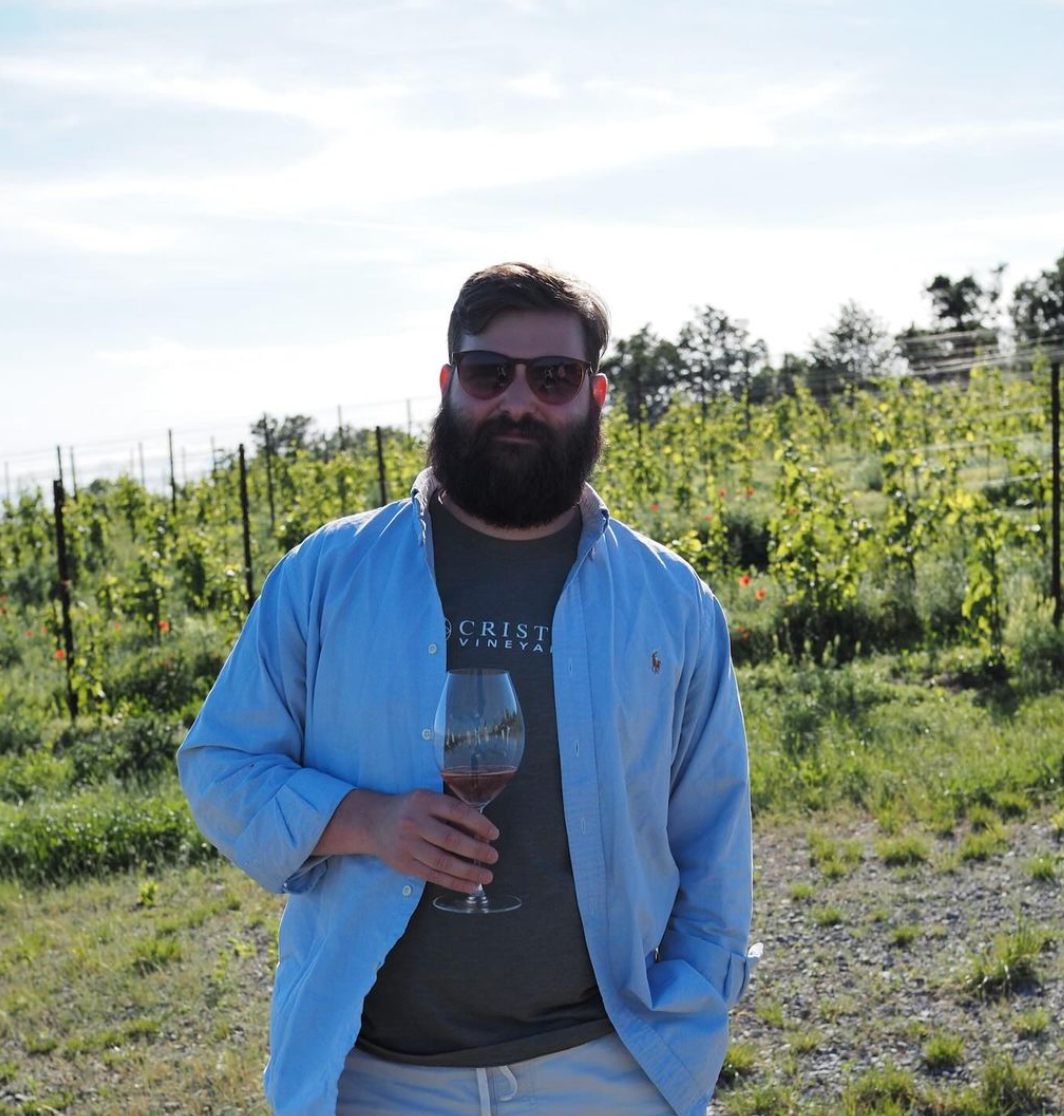
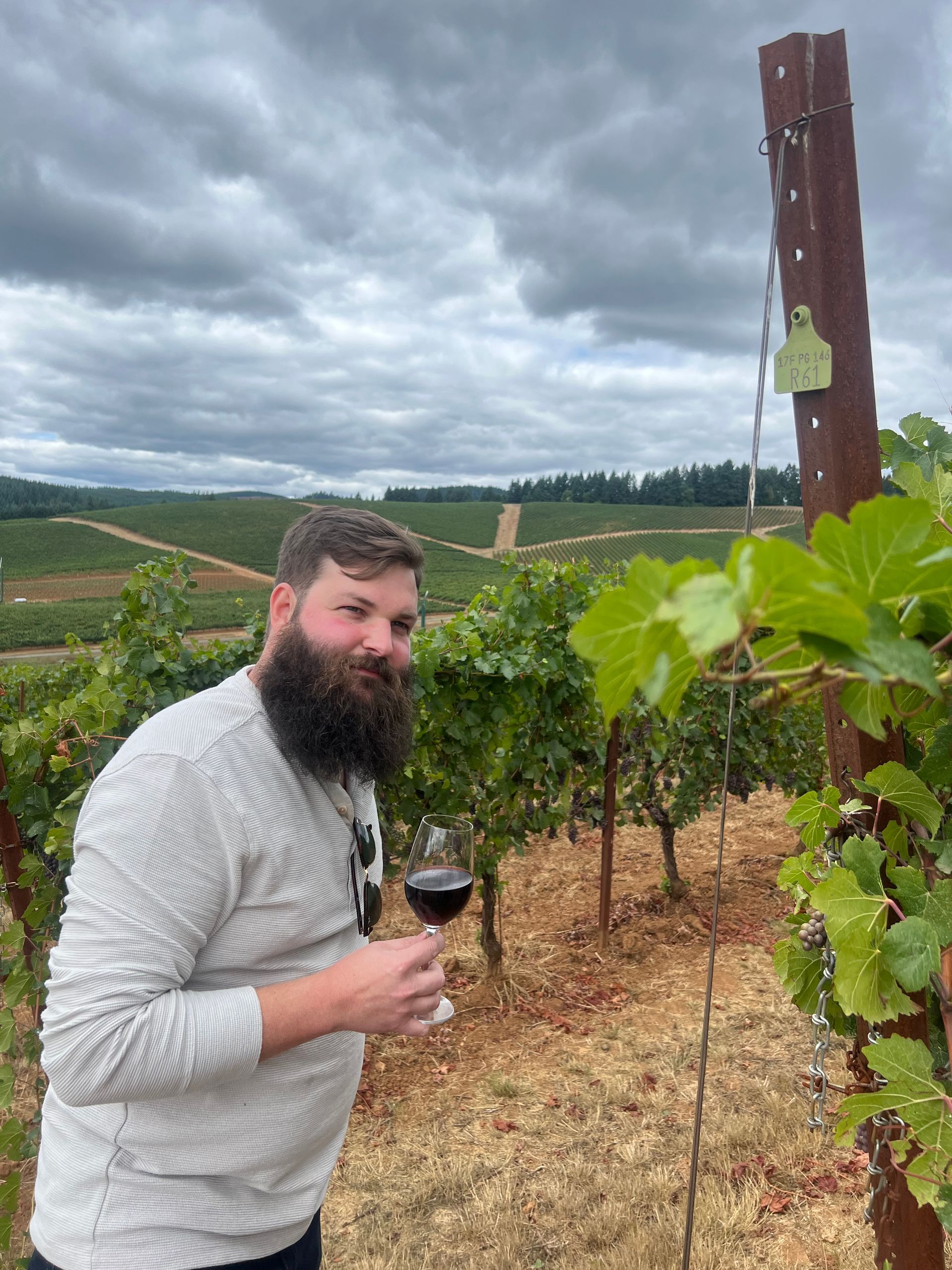

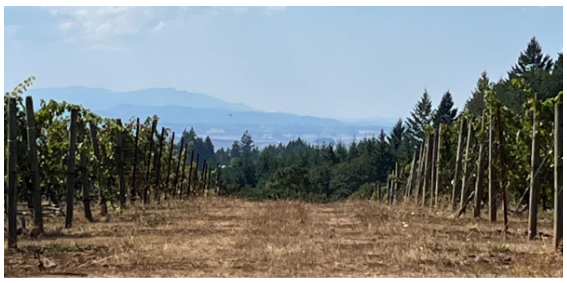
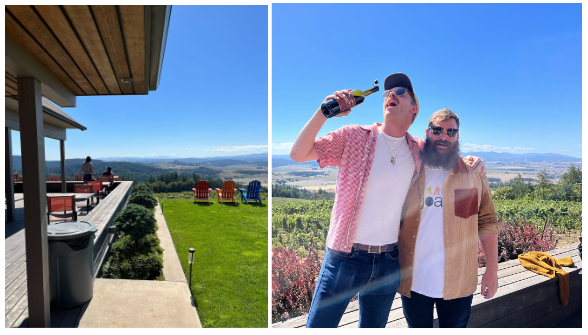
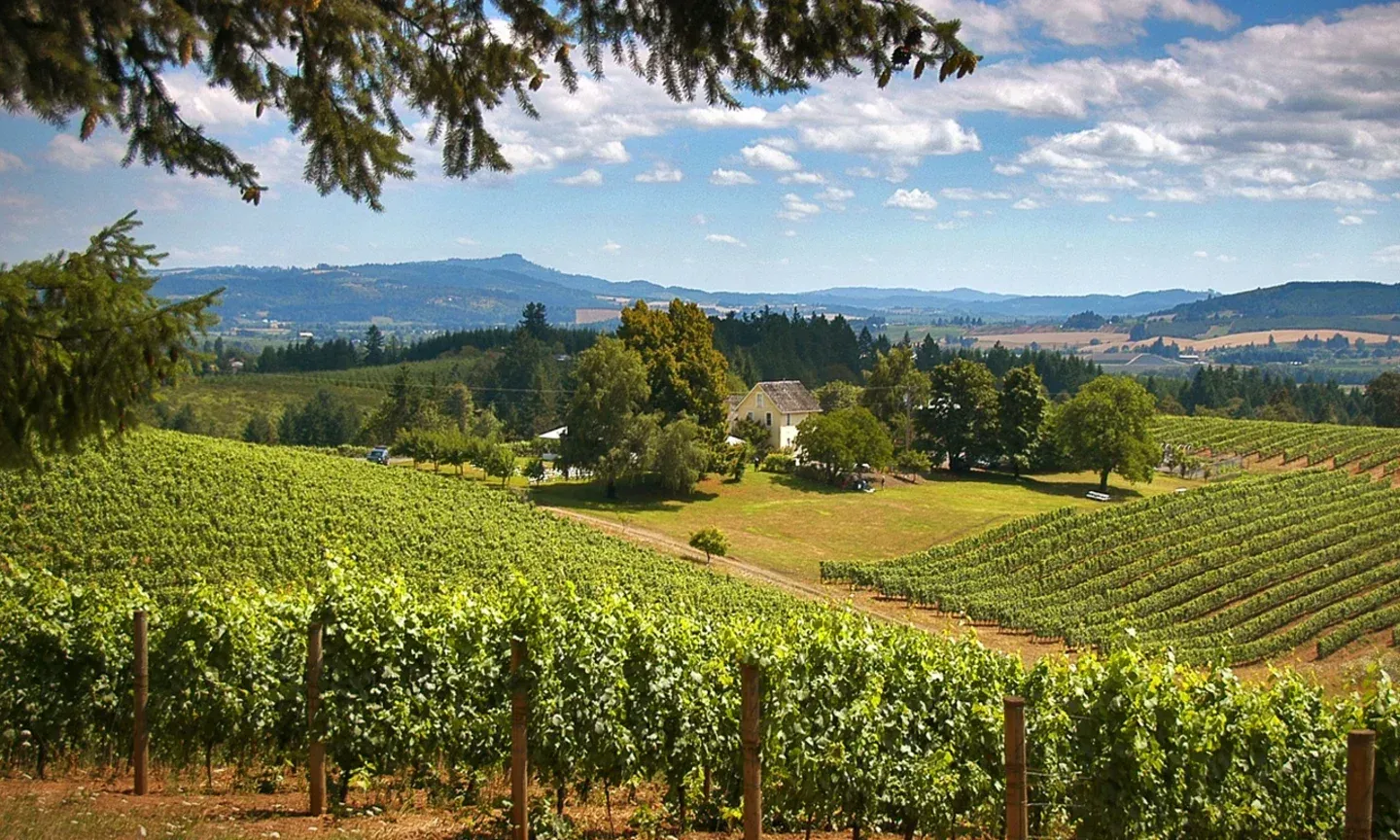
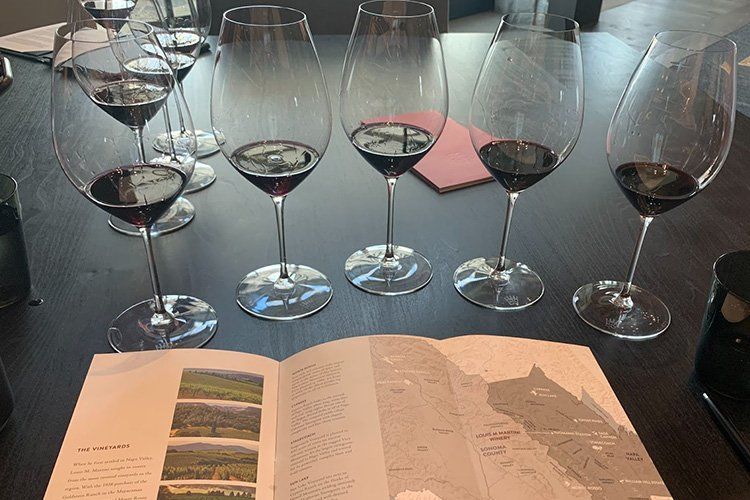
Store Hours
Mon - Thu: 9am - 9pm
Fri - Sat: 9am - 10pm
Sun: 10am - 6pm
Customer Feedback
All Rights Reserved | Frugal MacDoogal | Privacy Policy
